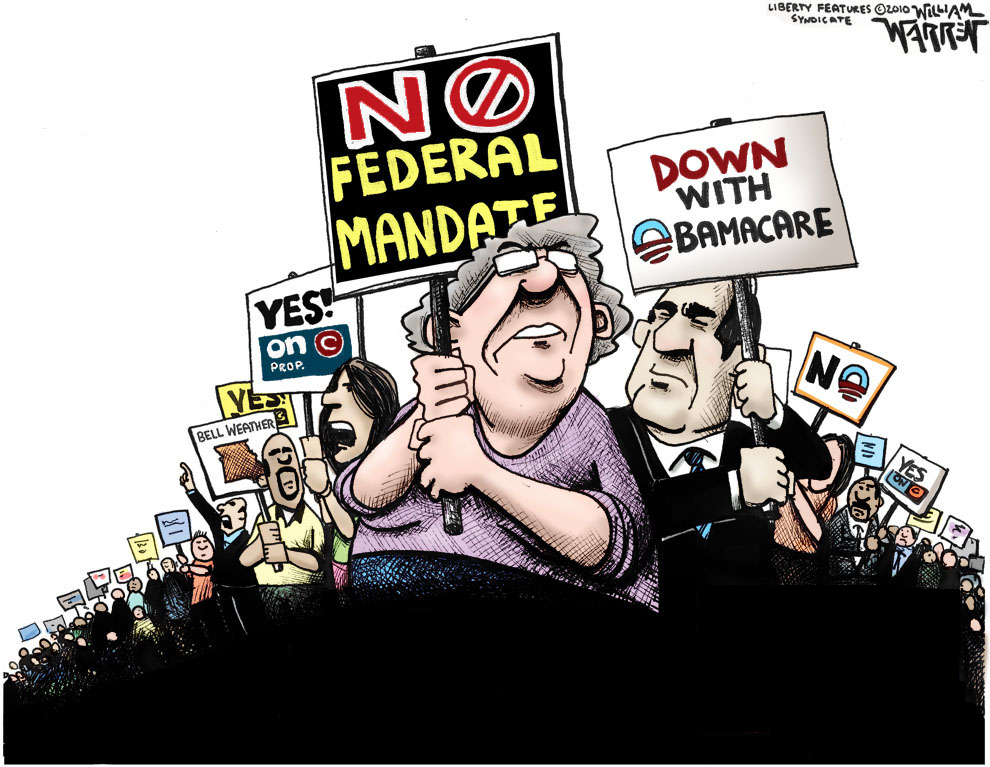One obvious drawback to the new health care system proposed by Congressional Republicans from a free market perspective is the continued presence of private insurance subsidies, this time via refundable tax credits.
It raises an obvious question: If the Republican legislative plan to repeal Obamacare is a “market-based” approach to health care that will bring down costs, why do private insurance policies need to be subsidized?
Contextually, the proposed bill fails to repeal or address the Obamacare insurance regulations, the American Medical Association’s monopoly on doctor certification via control of medical schools, the Food and Drug Administration monopoly on approving new drugs, and the government-created state-by-state insurance monopolies, which appear to drive up the cost of premiums by limiting competition. It does not address medical malpractice reform.
These are some of the historic cost-drivers that make it harder if not impossible to bring affordable, alternative insurance policies to patients.
Where is the Uber of insurance companies?
We’re told by GOP Congressional leaders that the reason the bill does not go after any of these cost-drivers is because of Senate rules on reconciliation that limit votes to only tax and spending items with direct budgetary impact.
Meaning, Congressional Republicans are crafting a new national health care system — comprising almost one-fifth of the $18.6 trillion U.S. economy — based on what the Senate parliamentarian will allow to get through on budget reconciliation. That is no way to construct a policy of such significance, but here we are.
There are other problems — such as encouraging further Medicaid expansion through the end of 2019, including the federal matching funds, and $2 billion a year for “safety net funding” for non-expansion states — but they arise as political choices made by Congressional leaders, not constraints from the reconciliation process.
In 2015, Republicans passed budget reconciliation legislation, H.R. 3762, which former President Barack Obama vetoed in 2016, which included ending Medicaid expansion, premium subsidies, cost-sharing subsidies, the individual and employer mandates, reinsurance, risk corridors and risk-adjustment, and the taxes and spending from the health care law.
This set the minimal standard for what might be achieved under the reconciliation process, but notably missing were some of the same cost drivers enumerated above and market reforms that might address them.
So, let us not pretend we are driving down costs — instead, we are padding these shortcomings with billions of dollars of new tax credit subsidies. It is a new entitlement. And if history is any judge, it will never go away.
From 2000 to 2015, the nominal growth of health care premiums — individual and family — have consistently outpaced the nominal growth of household median income, according to data compiled by the Kaiser Family Foundation and the U.S. Census Bureau.
Individual premiums grew an average 7 percent a year, family premiums grew 7.6 percent a year — but incomes only grew 2.1 percent.
That said, the growth rate of health care premiums was already coming down throughout the 2000s before Obamacare was enacted. In 2011, after the insurance regulations of the health care law went into effect, there was another tremendous spike in premiums.
A cynic might suggest the now GOP-proposed tax credits appear as a tacit admission on lawmakers’ parts that they do not believe costs are coming down. That must be because they do not think market-based reforms are ever going to be implemented — and so they buy into the idea that health care must be subsidized in order to be affordable.
Because if the plan now under consideration truly brought down costs, nobody would think it needs to be subsidized — and nobody would be talking about future phases to get the job done.
If the biggest impediment to real, market-based health care reform is the Harry Reid-appointed Senate parliamentarian — Elizabeth MacDonough — then it’s time to overrule her and change the rules, either by expanding what types of provisions can be included under reconciliation or, ideally, by just eliminating the legislative filibuster.
Since the advent of the cloture rule in 1917 — now 100 years old — Republicans have never had a filibuster-proof majority. And if history holds, they never will. Over that time, the size and scope of the federal government has dramatically expanded — and been locked in — because of Senatorial supermajorities Democrats gained in the 1930s, 1960s, 1970s and in 2009-10, when Obamacare was enacted.
The filibuster has not served to limit government, it has locked in its maximization and made the free market something of a fairy tale. Moreover, with the direct election of senators, the Senate cloture rule is an unnecessary antique, when voters can hold senators accountable via elections every two years. Overall, eliminating the filibuster would make the government more responsive to the will of the people.
It would also open up tax reform, entitlement reform and you name it over the next couple of years.
If the Senate overreaches in a non-filibuster world, the American people would be able to respond at the polls — just as they will sure react if Congressional Republicans fail to keep their campaign promises.
President Donald Trump in all likelihood will never be more powerful than he is right now. You don’t get to phase two if phase one fails. If Senate rules stand in the way of implementing free market reforms, then change Senate rules and fix our broken health care system, including eliminating subsidies. No more excuses.
Robert Romano is the senior editor of Americans for Limited Government.








